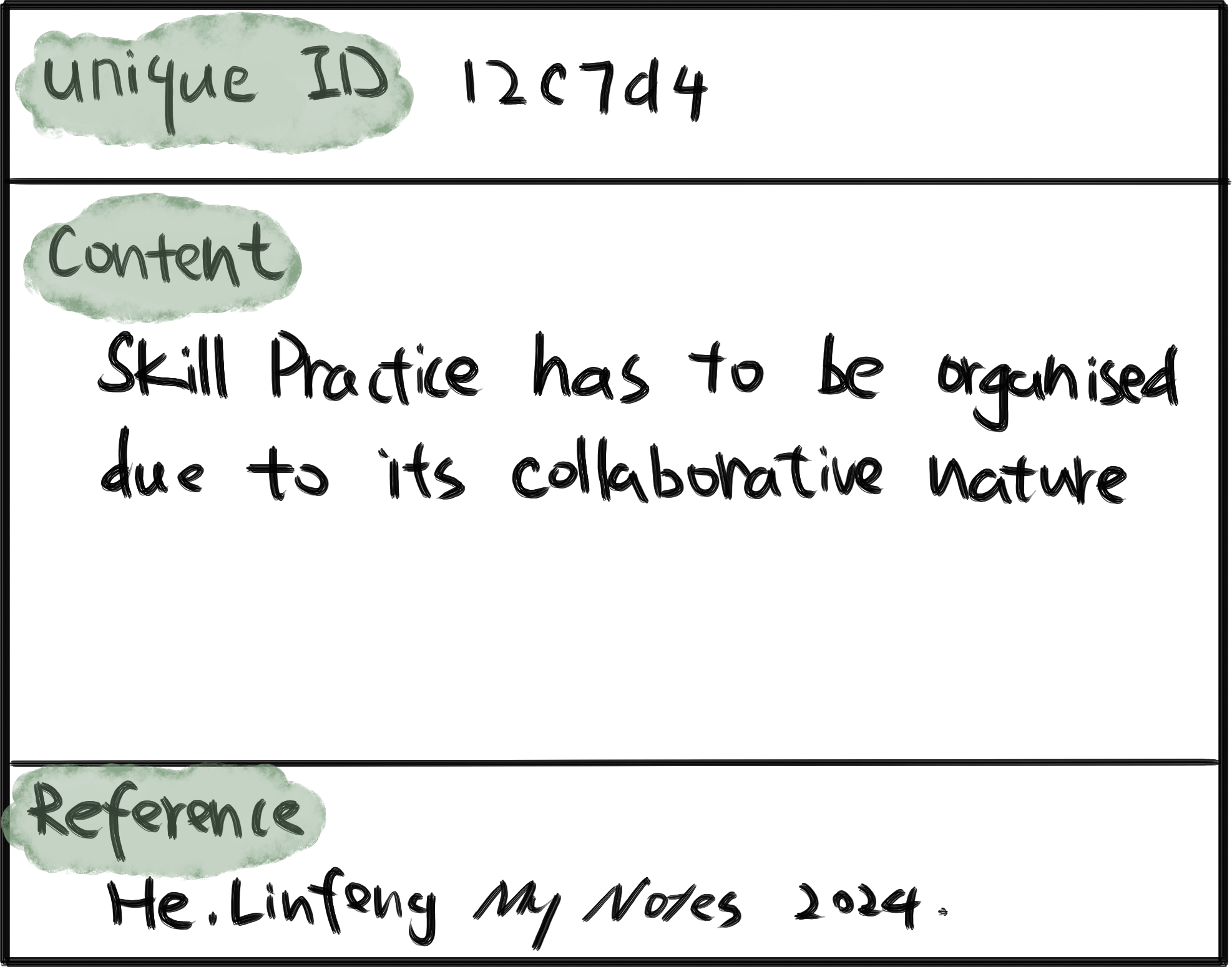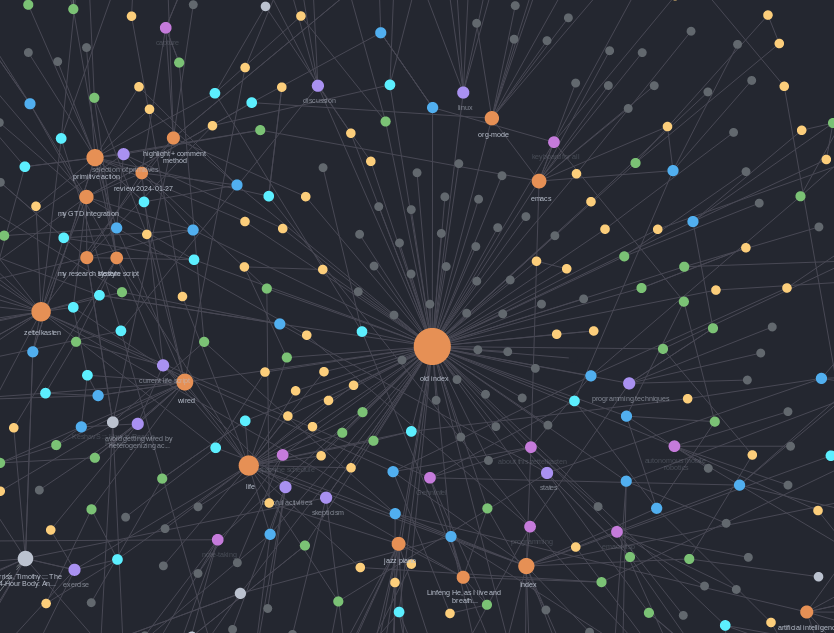zettel
Table of Contents
basic component of zettelkasten. A zettel is formulated in the following 3 parts:

- unique ID
- used to reference a specific zettel in other zettel
- content
- an idea, a thought.
- reference
- context, or source.
A functional zettel cannot just be your whole notebook with a unique ID like “notes-in-2024”. For a zettel to be functional in a zettelkasten, it has to follow some principles:
- zettel should be atomic
- zettels should be connected
- zettel should be simple
- zettelkasten and mindmap
- zettel name length is not important
- navigation zettel
Backlinks
zettel should be atomic
content of a zettel should only address atomic idea, because:
- atomic notes make reference easy, make discussion with zettel easy, as referring to one propositions is then intuitive
- atomicity - flexibility, making it convenient for rearranging organization and compilation, to reuse notes with zero effort
- atomicity make bad note better and hence ensure works would not be wasted
In practice, when made atomic, a zettel often falls in one of 3 common zettel categories
- use reference only if necessary
use only the plainest, most literal terms
“I couldn’t reduce it to the freshman level. That means we really don’t understand it.” - Richard Feynman
navigation zettel
zettel that have lots of links. Could be specially made as entrance to ideas around a topic, like “Artificial Intelligence” to hold link to “Learning is not necessary for Artificial Intelligence”, when I have a good idea on the latter, and the former only as portal to good ideas like the latter.
This is an exception for zettel should be atomic. Clearly, “Artificial intelligence” can be split in many ways; yet this navigation is still useful
navigation zettels often falls into the following categories:
- plain navigation for browsing - index
- incidentally important concept - zettel
- in the process of decomposing a complex problem - “solving XXX with A and B” “convert XXX into YYY” “solve YYY with A to B-compatible form” until the most simple propositions.
- compilation of ideas to teach/present (draft/post of tutorial or artical) - “developmental learning tutorial 1: implementing scholarly thinking” “how one actually find out about useful knowledge from raw experience”
navigation zettel
zettel that have lots of links. Could be specially made as entrance to ideas around a topic, like “Artificial Intelligence” to hold link to “Learning is not necessary for Artificial Intelligence”, when I have a good idea on the latter, and the former only as portal to good ideas like the latter.
This is an exception for zettel should be atomic. Clearly, “Artificial intelligence” can be split in many ways; yet this navigation is still useful
navigation zettels often falls into the following categories:
- plain navigation for browsing - index
- incidentally important concept - zettel
- in the process of decomposing a complex problem - “solving XXX with A and B” “convert XXX into YYY” “solve YYY with A to B-compatible form” until the most simple propositions.
- compilation of ideas to teach/present (draft/post of tutorial or artical) - “developmental learning tutorial 1: implementing scholarly thinking” “how one actually find out about useful knowledge from raw experience”
creative understanding
(primitives)
common and and intuitive way is to do discussion of this idea: writing definitions, proofs, tutorials, illustrations, teach it to someone else etc.
Another way of looking at it is to see the whole paper as a polished compilation zettel, copying each reference into the main text, then it is intuitive to recreate it with bunch of zettels
zettelkasten

zettelkasten is note-taking and note management system with the following 4 properties: